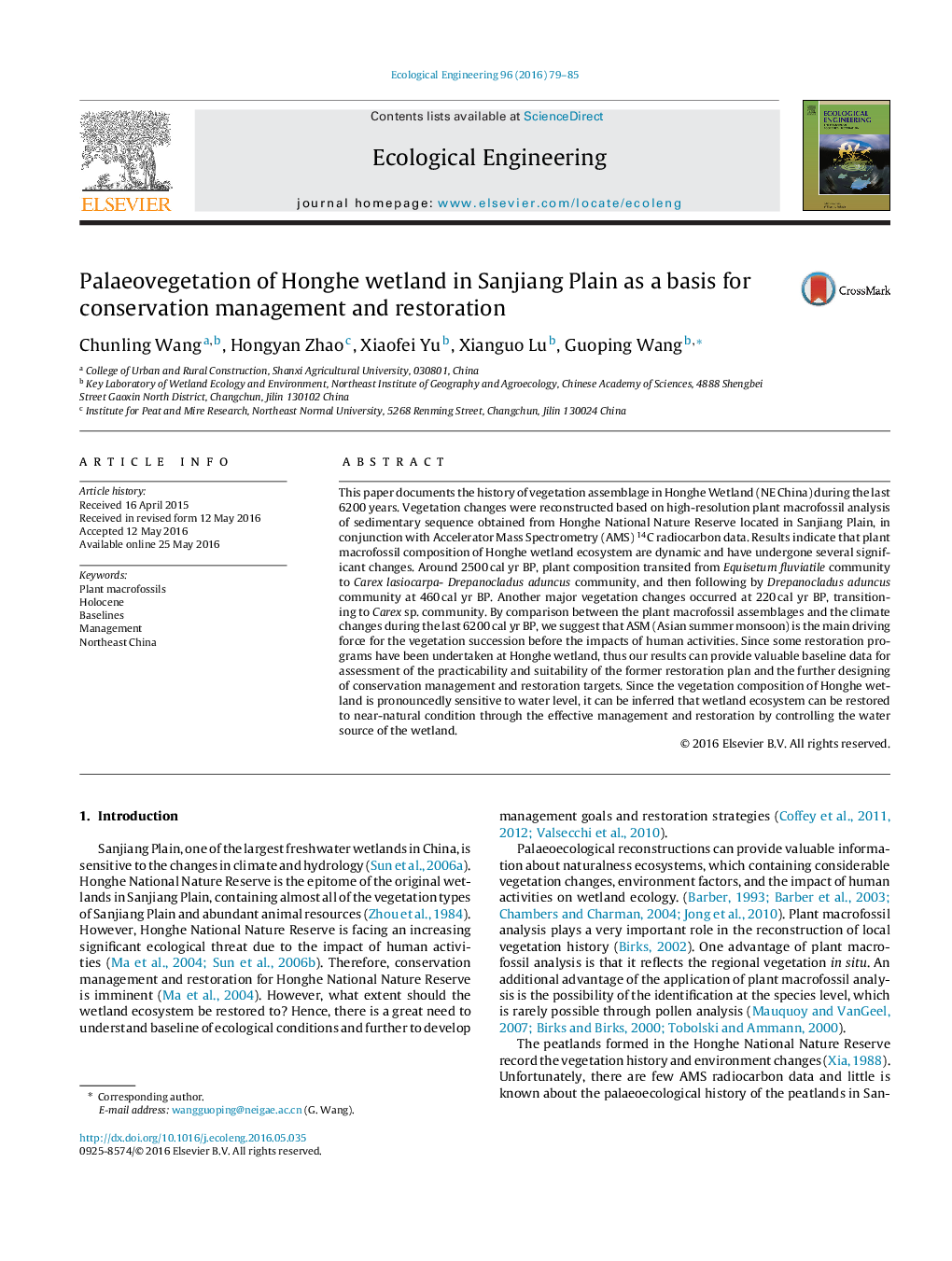| Article ID | Journal | Published Year | Pages | File Type |
|---|---|---|---|---|
| 5744090 | Ecological Engineering | 2016 | 7 Pages |
This paper documents the history of vegetation assemblage in Honghe Wetland (NE China) during the last 6200 years. Vegetation changes were reconstructed based on high-resolution plant macrofossil analysis of sedimentary sequence obtained from Honghe National Nature Reserve located in Sanjiang Plain, in conjunction with Accelerator Mass Spectrometry (AMS) 14C radiocarbon data. Results indicate that plant macrofossil composition of Honghe wetland ecosystem are dynamic and have undergone several significant changes. Around 2500Â cal yr BP, plant composition transited from Equisetum fluviatile community to Carex lasiocarpa- Drepanocladus aduncus community, and then following by Drepanocladus aduncus community at 460Â cal yr BP. Another major vegetation changes occurred at 220Â cal yr BP, transitioning to Carex sp. community. By comparison between the plant macrofossil assemblages and the climate changes during the last 6200Â cal yr BP, we suggest that ASM (Asian summer monsoon) is the main driving force for the vegetation succession before the impacts of human activities. Since some restoration programs have been undertaken at Honghe wetland, thus our results can provide valuable baseline data for assessment of the practicability and suitability of the former restoration plan and the further designing of conservation management and restoration targets. Since the vegetation composition of Honghe wetland is pronouncedly sensitive to water level, it can be inferred that wetland ecosystem can be restored to near-natural condition through the effective management and restoration by controlling the water source of the wetland.
